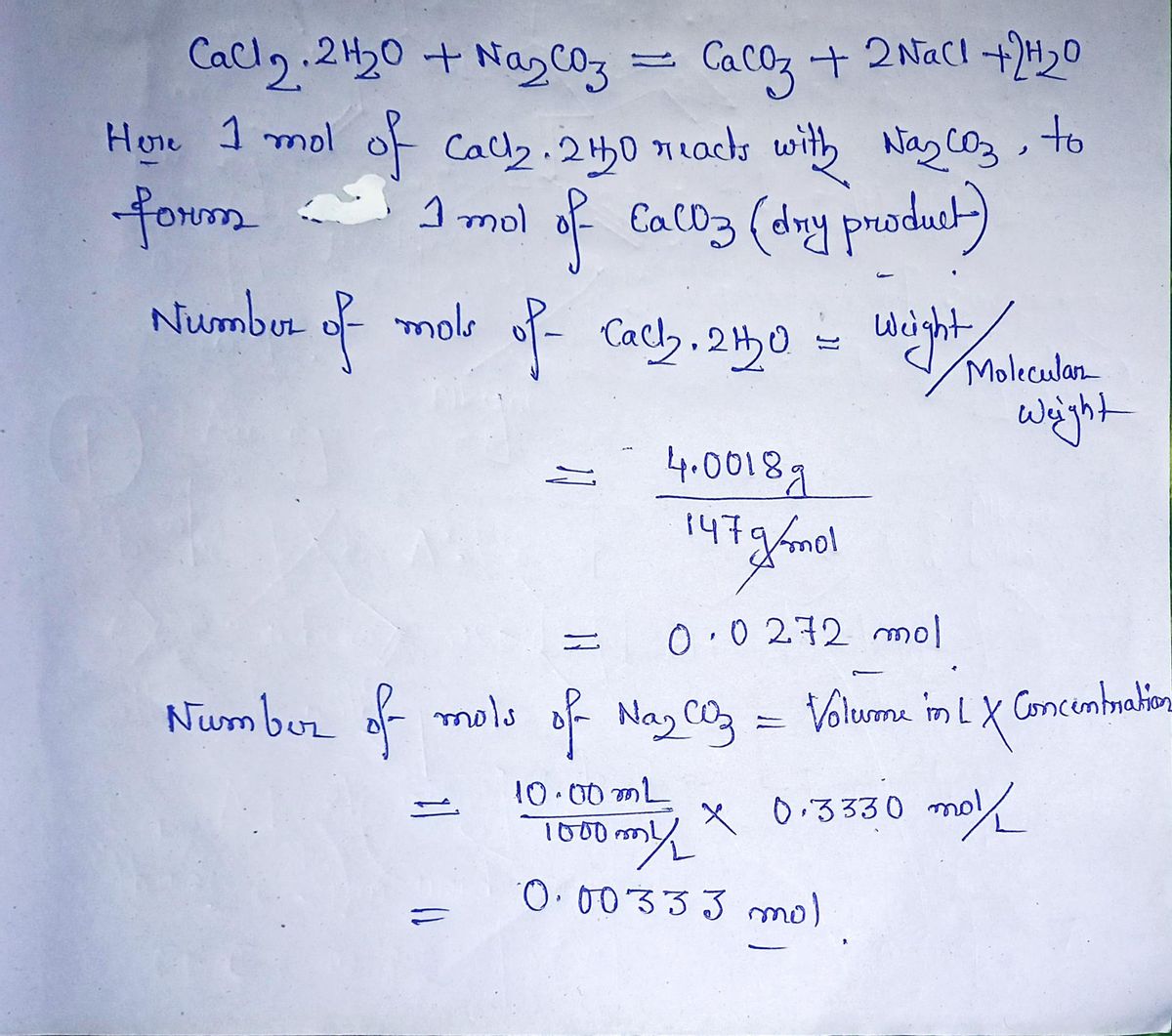Figure 1:Experimental results
|
Mass of empty weighing dish,g |
2.2522g |
|
Mass of weighing dish + CaCl2 · 2H2O,g |
6.2540g |
|
Mass of CaCl2 · 2H2O, g |
4.0018g |
|
[Na₂CO₃], mol⋅L−1 |
0.3330 mol⋅L−1 |
|
Volume of the CaCl2 solution used, mL |
10.00mL |
|
Volume of the Na₂CO₃ solution used, mL |
10.00mL |
|
Mass of the filter paper + watch glass, g |
51.3999g |
|
Mass of the filter paper + watch glass + dry product (final), g |
Weight 1=51.7235g Weight 2=51.7058g |
Figure 2:Calculated data
|
Mass of dry product, g |
0.3059g |
|
Moles of CaCl2 used, mol |
0.02721mol |
|
Moles of Na₂CO₃ used, mol |
0.02721mol |
|
[CaCl2], mol⋅L−1 |
0.3330 mol⋅L−1 |
|
Limiting reagent |
|
|
Calculated mass of excess reagent remaining in the mixture after reaction, g |
|
|
Theoretical yield, g |
|
|
% yield |
|
I need help in my lab. The number of mols of cacl2 and na2co3 gives me the same number. If I need to calculate the limiting reagent, how would I be able to do that if they have the same number of mols.

Step by step
Solved in 2 steps with 2 images









